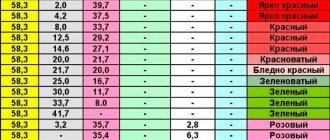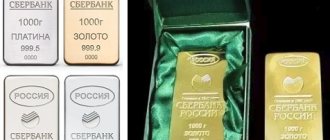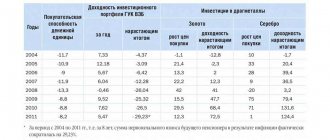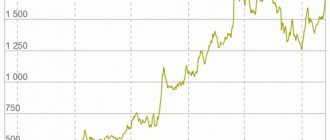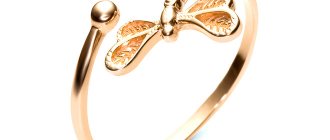Mountains of gold in German hands
While the insatiable appetite of the Chinese and Indian populations for importing, purchasing and hoarding physical gold is well known, the West also has such a market, which remains less visible than China and India. We are talking about the German gold market.
While German citizens are known to love holding gold, the extent of the German population's gold savings came to light following the recent release of a survey commissioned by Reisebank, a bank active in the German precious metals market.
A survey conducted for Reisebank by the Center for Financial Services Research (CFIN) found that German adults currently own an incredible 8,918 tonnes of gold, which at the current price of gold in euros is worth around €330 billion. Note that this figure is gold held held by private individuals in Germany, and does not include the gold reserves of the German central bank, the Bundesbank, amounting to another 3,370 tons.
The Germans own 4925 tons of gold bars and coins
According to CFIN, of the 8,918 tons of gold held by the German population, 4,925 tons (or 55%) are physical gold bars and coins, and 3,993 tons are gold jewelry.
With a total population of 82 million, of which 69 million are over 18 years of age, the CFIN survey found that an impressive 38% of German adults (26 million) own physical gold in the form of gold bars and coins, while 61.5% of adults (45 million) own gold coins. jewelry, and 14.5% of German adults (roughly 10 million) hold shares in gold ETFs and similar products such as Xetra and Euwax.
The CFIN research center is affiliated with the University of Berlin. Steinbeis has been conducting similar surveys about the gold habits of Germans for the past 10 years, and there have been six such surveys so far.
CFIN's 2021 report, broadly entitled Gold Investments 2021: Indicators, Motives and Attitudes of Individuals, intends, in CFIN's words, to "capture and analyze the size of gold savings, the use of gold as an investment, and the motives and attitudes of the German population towards gold."
In 2010, a CFIN study showed that the German population held 7,558 tons of gold (of which 3,992 tons were in the form of gold bars and coins). Thus, over the ten-year period from 2010 to 2021. The Germans added 1,360 tons of gold to their gold holdings, including 933 tons of gold bars and coins.
The latest survey allowed us to make other interesting discoveries:
Owning physical gold is very popular among Germans. German citizens use gold as an investment, with the majority of their gold investments being in the form of gold bars and coins.
Individuals in Germany continue to consistently purchase gold, increasing their gold holdings. The 8,918 tonnes in the German private sector calculated in the 2021 survey is a historical record.
On average, every German over 18 years old owns 71 grams of gold in the form of gold bars and coins and 58 grams in the form of jewelry.
According to the survey, 91% of respondents said they were happy they chose gold as an investment. Nearly 83% said they plan to hold on to their gold, and more than 78% of those who recently bought gold intend to buy more in the future.
German citizens hold 2.6 times more gold than the Bundesbank. Chart source: ReiseBank AG
Citizens' savings; Bundesbank (total value: approx. 450 billion euros*)
Every German over 18 years old owns an average of 71 grams of investment gold
91% are satisfied with their gold investments; 82.5% intend to hold their gold; 78% plan to continue purchasing gold
The Germans hold 6.5% of the world's gold reserves. This is equivalent to a cube with a side of 8.6 m
Source: Study “Gold Investment 2021: Indicators, Motives and Attitudes of Individuals” conducted for ReiseBank by the Center for Financial Services Research (CFIN) of the University of Berlin. Steinbeis
*Value estimate based on €1.137 per ounce gold (April 15, 2021)
While a quarter of Germans buy gold online, 62% go to a bullion dealer or bank to do so. The survey also found that Germans who buy gold try to make sure that the gold they buy has been analyzed and hallmarked and that the sellers are reputable.
German citizens have 2.64 times more gold than the German central bank. But while Bundesbank gold gets a lot of attention due to its large volumes and recent repatriation moves, the reality is that Bundesbank gold reserves are static and far inferior to the gold holdings of German citizens.
While the German population holds a lot of gold, it also holds a fair amount of other wealth and assets, with the population's total gold wealth accounting for only about 1.6% of all assets owned by German households.
Most of the Germans' gold is not stored at home.
The survey also asked where Germans store their gold. 38.3% of respondents store gold at home, 39% in bank vaults, 5% use third-party gold vaults, and the remaining 17.7% keep gold “elsewhere.” What these “other places” are is not specified.
This high percentage of Germans storing gold in bank vaults is a little surprising, but this can be explained by the fact that in Germany many banks sell gold bars and coins directly to customers: in Germany, going to the bank and buying gold is a common thing. Therefore, German banks that offer precious metals also offer safes for storing them.
500g stamped gold bar from the Heraeus , Hanau, Germany
Since the previous survey in 2021, Germans have purchased 220 tons of gold bars and coins. According to the latest study, 25% of respondents have bought investment gold over the past two years, with an average investment of €4,730. More than 50% of investment gold buyers chose gold bars (mostly classic), while more than a third chose investment gold coins. Only 11% of survey respondents reported selling gold during the same period.
A Reisebank dealer quoted in Die Welt's article on the survey said that customers were "in particular demand for bars from 100g as well as gold bullion coins" and that macroeconomic uncertainty was the "main driver of demand".
Motives for owning gold
Over 26 million German adults hold investment gold in the form of gold bars and coins. The number is amazing. But why is physical gold so popular among German citizens? The collective memory of the hyperinflation of the 1920s and how the value of fiat currencies could be destroyed may be playing a role in demand. The same must be true of the collective memory of war and upheaval, the division of Germany and the importance of gold in times of crisis and emergency. This rationale embraces gold's properties as an inflation hedge, a store of value, and a safe haven.
CFIN notes that Germans hold gold as a value hedge, i.e. to preserve wealth, while Reisebank points out that German gold demand is driven by macroeconomic uncertainty, i.e. it is used as a financial hedge. As a tangible investment free from counterparty and default risk, gold is truly ring-fenced from the banking system and is a traditional safe haven and long-term store of value, so the Germans seem to intuitively understand this.
The results of the latest CFIN survey are also interesting because they show that many more Germans are investing in physical gold than in the stock market. This conclusion can be drawn from a recent study by the Deutsche Aktieninstitut (DAI), a German capital market industry group, which found that only 10.3 million Germans invest in stocks or mutual funds, far fewer than the 26 million who invest in gold bars and coins, according to CFIN survey.
A few words about the survey methodology. According to CFIN, the results are based on a survey of 2,000 adults from different parts of Germany about their holdings of physical gold, gold jewelry and gold-related securities, and adjusted for region, income level and wealth-related factors. Although 2,000 people may seem like a small sample, it is not, as such a sample of a population of 69 million gives a confidence level of 99% with a margin of error of about 3%.
Therefore, if respondents answered truthfully about their gold savings, the survey results can be considered valid. But the validity of the truth assumption is difficult to judge.

The German gold market – depth and complexity
For those unfamiliar with the German gold market, its size, depth and complexity may initially surprise you. The market is decentralized and includes many banks, refineries, national gold wholesalers (such as Ziemann Valor) and precious metals retailers, all of whom sell gold products to the public. Banks include Commerzbank, Landesbanks (regional banks) such as BayernLB, LBBW and Helaba, Volksbanks (people's banks) and Raiffeisenbanks (cooperative banks), savings banks, and the aforementioned Reisebank.
Reisebank is one of Germany's top three gold dealers and supplies gold and other precious metals to more than 1,200 Raiffeisenbanks in the country. In addition to supplying gold to Raiffeisenbanks, Reisebank (whose turnover in 2021 amounted to more than 32 tons of gold) sells gold through more than 100 of its own branches, often located in German train stations and airports.
There are 8 Landesbanks in Germany, and they all sell gold directly to the savings banks in their regions, but BayernLB, LBBW and Helaba also act as national distributors, selling gold to other banks and to wholesalers and retailers from different parts of Germany.
On the German market, gold is sold both by German gold refineries such as Heraeus, Heimerle + Meule, CHafner, Aurubis and Agosi, as well as by foreign refiners, national mints (such as the Perth Mint and the Royal Canadian Mint) and international wholesalers ( such as A-Mark and Dillon Gage).
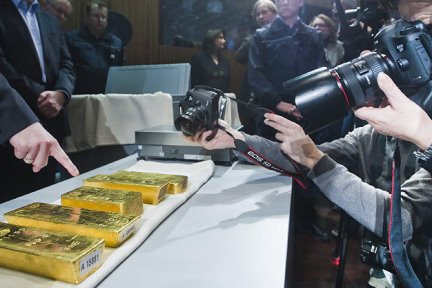
Gold bullion display at the Bundesbank headquarters in Frankfurt, Germany
Conclusion
With such a deep and liquid gold market, the average private German customer can easily purchase gold bars and coins, with a wide range of places to buy from physical bank branches and precious metals dealers to online sites. This extensive supply of investment gold throughout Germany may also partly explain why so many Germans hold gold bars and coins.
Whichever comes first, supply or demand, German citizens undeniably own vast savings of physical gold. If you add up the 8,918 tons of gold from the German population and the 3,370 tons of gold from the German central bank, the German central bank and private sector have a total of 12,228 tons of gold. And this is almost 7% of all the world's above-ground gold reserves.
If you add up German private gold holdings with the estimated 25,000 tons of gold in India (as of 2021) and the over 20,000 tons of gold in China, the three countries have at least 55,000 tons of gold. So while China and India are more often in the news for their gold demand, gold imports and overall gold reserves, the German population is closing in on the league of private gold holders in India and China, which the media sometimes overshadows in its coverage of Asian gold demand and figures for eastern gold reserves.
Golden houses and cars
Treasures of the Third Reich could be taken abroad under the guise of the most ordinary objects. For example, building materials, frying pans, hooks and other things. In 1983, two tourists who got lost in the forest near the Austrian town of Bad Aussee discovered a small forest house. They were surprised to discover that its roof was made of gold bars with a swastika. The same material was used for window frames and walls. The house in the forest was valued at tens of millions of US dollars.

The roof of the house near Bad Aussee, as well as its window frames and walls, consisted of gold bars with a swastika // Photo: pressa.tv
And as noted in the memoirs of SS Standartenführer Friedrich Schwend, he left for Spain, under the wing of dictator Franco, in a gold car. In addition, he managed to take an incredible amount of gold abroad under the guise of the most ordinary things.
Germany

Germany has the second largest gold reserves, second only to the United States, but does not boast rich deposits of the precious metal. This country never suffered from a “gold rush”, and thousands of miners did not seek to devastate its depths, although in some regions mining of the yellow metal was and is still practiced.
The most remarkable thing is that absolutely everyone can try their luck and feel like a character in an adventure novel. All you need is enthusiasm, minimal equipment and indefatigable persistence. You can start hunting for gold anytime, anywhere: German laws do not limit modern prospectors. There are also no licenses or official permissions required, and anything you are lucky enough to find can be legally kept. Authorities sometimes use placer gold deposits to attract tourists, and locals offer equipment rentals and training.
USA

When Emperor Alexander II made the decision to sell Alaska, no one in Russia had any idea about the riches of this region. The wild, cold terrain seemed completely useless until, at the end of the 19th century, Americans discovered the gold-bearing Klondike River in Alaska, and tens of thousands of prospectors rushed north.
The history of almost all towns in Alaska is connected with gold mining. Nowadays, this area also brings significant income to the region: tourists come to look for gold. They are distinguished from their predecessors mainly by their motives - they do not set the goal of their journey to get rich, but are simply looking for adventure and want to have a good time. To mine gold, it is enough to purchase a license, the cost of which is about 50 USD. per day, and everything that the tourist finds, he can take with him. For those who are not ready to search on their own, there are many gold mining clubs in the country that, for a fee, allow prospecting on their territories and offer equipment rental and training.
Ghana

Precious metals mining in Ghana is primarily associated with Tarkwa, a famous gold-bearing area located on the West African Shield. It includes 4 gold ore fields.
All gold mined by back-breaking labor under the hot African sun in Ghana can be freely converted into currency in banks, where its purity is determined. Payment is made immediately on the spot by weight when converted to chemically pure gold and at the price of the gold exchange rate on the London Stock Exchange on the day of delivery to the bank.
Artisanal mining here is mainly carried out by local residents, for whom this is sometimes the only source of income. A foreigner can also join the search, but he probably won’t work like this for long, unable to withstand local competition. Although this is not limited by law, it is better to go to more prosperous countries in search of gold.
The biggest cache
The largest cache of Third Reich gold was discovered in Western Thuringia, namely the Merkerz salt mines. It was pointed out to American soldiers in 1945 by women who worked here. In total, gold worth almost two hundred and fifty million Reichsmarks was found, as well as many art objects stolen by the Nazis. Among the treasures were crowns from concentration camp prisoners, as well as their jewelry.
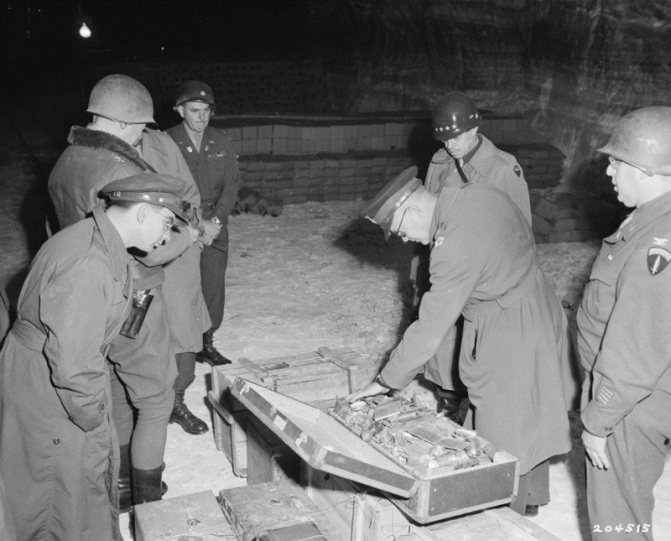
The largest cache of Third Reich gold was discovered in Western Thuringia, namely the Merkerz salt mines // Photo: terraoko.com
Traces of the untold wealth of the Third Reich are periodically found all over the world. Perhaps Nazi Germany really possessed those countless treasures that are attributed to it. By the way, according to the decision of the Potsdam Conference, the values of the Nazis should be divided among themselves by the USA, Britain, France and the USSR.
Under Joseph Stalin, the KGB was investigating the disappearance of Nazi gold. The special operation was called “Cross” and was aimed at finding out all the details of the movement and disappearance of the gold of the Third Reich, as well as the Russian Empire. After Stalin's death in 1953, according to official data, the operation was completed.
Do you want more interesting publications from the online publication “Russian Destiny”? Save your time, subscribe to us on social networks: #VKontakte #Odnoklassniki #Facebook
Finland

Finnish Lapland is an amazing northern region, where, according to Hans Christian Anderson, the Snow Queen lived. This land is shrouded in myths and legends about the gold mines that lie in its depths, and the gold rush raged in this state with no less force than in North America or Siberia. Since the 1930s, thousands of miners have flocked to Lemmenjoki and Ivalojoki, the gold-bearing rivers of Lapland.
Modern gold seekers need to obtain special licenses, which cost about 300 euros for 10 days. But the problem is that the sale of found precious metals is subject to a significant tax. The price of Lapland gold on the world market is above average, as it has exceptional purity, which reaches up to 95%, so that even small finds made in 10 days pay for the licensing costs.
Switzerland

Switzerland is an exemplary state in terms of its attitude towards its own ecology and natural resources. Currently, there is no industrial gold mining on the territory of the confederation, although Switzerland is the world center for processing and trading of the yellow metal. More than 70% of all gold reserves pass through its territory in one way or another.
The country has both native and placer gold, but due to the careful attitude towards it and nature, its mining is allowed only to amateurs and tourists. Excellent conditions have been created for this, and modern miners can only pay for a permit and wash and export gold to their heart’s content. You can even take part in competitions and receive a “gold digger certificate.” Gold in Switzerland is small, and a rare tourist manages to get something significant, but in this case the main thing is participation. Occasionally, however, remarkable finds occur, which serve as excellent advertising to attract tourists.
In Switzerland, since 1989, the Association of Gold Miners has been operating, a non-profit organization whose goal is to popularize the hobby of gold prospecting.
New Zealand

This island nation has a fairly developed tourism industry, including visits to coal mines and gold mines, some of which are still in operation. These tours allow you to enjoy the amazing New Zealand landscapes and gain an unforgettable experience.
There are 16 districts in the country where everyone has the opportunity to search for gold without obtaining special permission to do so. All these areas are located in the South Island in Nelson-Marlborough, the West Coast, Central and South Otago. Comfortable campsites are provided for miners. In each of these places, tourists can find and keep gold, although it is scarce and it is very difficult. The main condition for such activities is respect for the environment and strict adherence to the boundaries defined for miners.

